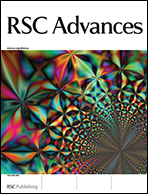The effect of initial curing temperature on final morphology, the influence of different morphologies on the properties and the reason for the initial curing temperature's effect on phase separation in a bisphenol A-aniline benzoxazine (BA-a)/N,N′-(2,2,4-trimethylhexane-1,6-diyl)bis(maleimide) (TBMI)/imidazole blend were studied in this paper. The blend showed different morphologies at different initial curing temperatures and the morphologies changed from a clear bi-continuous structure to an obscure structure, followed by an interpenetrating network, with increasing initial curing temperature. This may be mainly caused by the amount of co-reaction of two monomers and the relative rates of phase separation and reaction. At the same time, the Flory–Huggins parameter of blends became smaller and smaller as the initial curing temperature increased, which led to a difficulty in phase separation due to the thermodynamics. Finally, phase separated products showed improved toughness and thermal properties.

You have access to this article
 Please wait while we load your content...
Something went wrong. Try again?
Please wait while we load your content...
Something went wrong. Try again?


 Please wait while we load your content...
Please wait while we load your content...